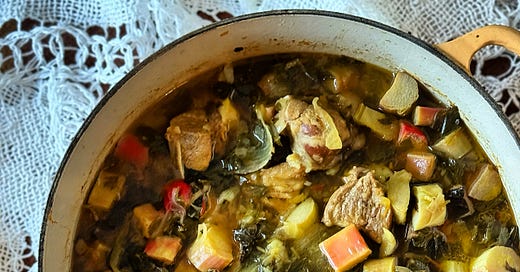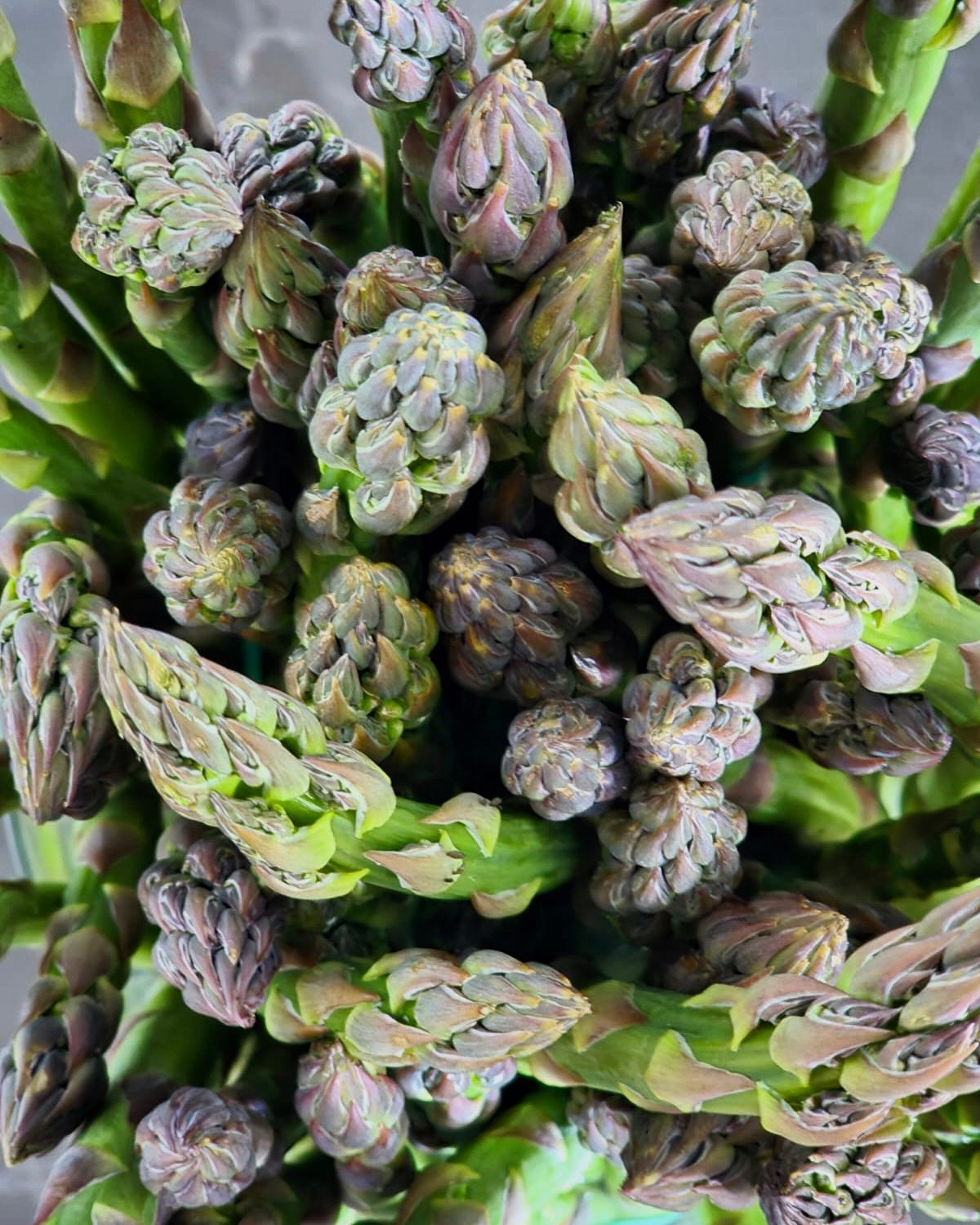It’s that time of year again.
It’s spring with its lilacs, tender green gardens, the return of robins and big fat earthworms inching through the ground. The weather is particular, not prepared to be typecast. Cool nights and rainy days give way to sunshine, dip perilously close to zero and shoot up again to grant permission for us to don shorts and t-shirts.
It’s also the time where I wish I was feeding a houseful, second helpings please and plenty to go around. I want to eat as much of this fleeting spring harvest as I can.
While mid to late summer is truly the season of abundance, fruits and vegetables crowding the farmers’ markets with the speed of a fast fashion production line, spring bounty takes its time. Asparagus may be ready this week, or may decide to keep its head in the sand a wee bit longer. Morels and wild leeks play hide and seek, revealing their location reluctantly, this many, and not more.
But the queen of my spring heart is rhubarb. The most awkward of the bunch, rhubarb is like a gangly teenager, shooting up high in all directions, curling when it should be straight, an ornery green when what you want is deep ruby red.
Never mind. It’s still the most magical contrarian. Intensely tart, with a mysterious scent, rhubarb is technically a vegetable, although it’s most frequently used in the kitchen like a fruit. Like asparagus, or bouquets of campanulas, I can’t help but fill my market basket with an abundance of rhubarb, often much more than I can possibly use.

Here we go
When ingredients are this good and this ephemeral, it’s like switch flips in my brain. I suddenly go in overdrive, buying way more than we can possibly eat. The challenge of course, is to find the new and the different. After all, how many strawberry rhubarb pies can one eat? (A lot, actually, but I digress). And that’s when the real alchemy happens, as I unearth new and as yet untried tastes, methods, recipes.
It’s the never-ending joy of cooking where, with a little sleuthing, time and a sense of adventure, new discoveries are found. I may still buy more than my fill, but oh what fun there is along the way.
Rhubarb khoresh (khoresh-e rivas)
Food of Life, Najmieh Batmanglij
serves 6-8
Look for recipes with rhubarb, and desserts top the list. But dig a little deeper, and the savoury side of rhubarb makes an appearance. Beyond rhubarb chutney or a mostarda, there are new treasures to be discovered.
In Persian cuisine, the use of the word khoresh is a general term that refers to stews of all kinds. Many Persian stews are known for their tangy character, often achieved through the use of souring agents such as sour grape juice (verjus) or dried limes. Rhubarb finds a unique place in khoresh-e rivas, a slow braised stew that combines meat or chicken with the vibrant flavours of parsley, mint, saffron, and fresh rhubarb. It’s not the work of thirty minutes; this stew is braised in stages, with a final finish in the oven to gently cook the rhubarb.
You’ll be well rewarded for the effort with this highly flavourful dish. Serve it over rice or, if you want to stay true to its Persian roots, a rice scented with saffron is lovely too.
Ingredients
4 tablespoons neutral oil, butter, or ghee
2 medium onions, peeled and thinly sliced
1 pound stewing meat (spring lamb is best but you can also use beef or veal, or boneless, skinless chicken thighs, cut into 2-inch cubes)
1½ teaspoons sea salt
½ teaspoon freshly ground black pepper
½ teaspoon turmeric
3 cups chopped fresh parsley
½ cup chopped fresh mint
¼ teaspoon ground saffron dissolved in 1 tablespoon rose water or water
1 tablespoon tomato paste
2 tablespoons fresh lime juice
1 pound fresh rhubarb, trimmed and cut into 1-inch pieces
In an ovenproof Dutch oven, heat 2 tablespoons oil over medium heat and brown onions and meat, about 10 minutes. Add salt, pepper, and turmeric, and sauté for 1 minute.
Pour in water—2½ cups for meat and 1½ cups for chicken. Bring to a boil, lower to a simmer, cover and cook over low heat: 1 hour for meat and 1¼ hours for chicken, stirring occasionally.
While the meat is cooking, in a wide skillet, sauté parsley and mint in the remaining 2 tablespoons oil over medium heat for 10 to 15 minutes until aromatic.
When the meat has simmered for an hour, add parsley and mint mixture, saffron-rose water, tomato paste, and lime juice to the Dutch oven. Cover and simmer 55 minutes longer over low heat.
Heat oven to 350°F (180°C). Arrange the rhubarb on top of the meat. Place a piece of parchment paper over the khoresh and pierce several holes in the paper with a skewer. Secure the parchment paper in place with a tight layer of aluminum foil. Pierce several holes in the foil and place the Dutch oven in the oven. Cook for 25 to 35 minutes or until the rhubarb is tender. Rhubarb is fragile; the pieces must be cooked but not to the point of dissolving or falling apart.
Gently mix the rhubarb into the khoresh, taste and adjust seasoning. If the khoresh is too sour, add 1 tablespoon sugar.
Serve over saffron-flavoured or plain steamed rice.







As a kid, we had tons of rhubarb in our backyard. We'd grab a few stalks and throw them in a pot with some water and sugar to make a sauce. Then we'd eat it with ice cream or by itself. I still love it to this day.
I love rhubarb, Elizabeth! My favorite go to sparkling water drink mix whenever we visit Germany in the summer :)